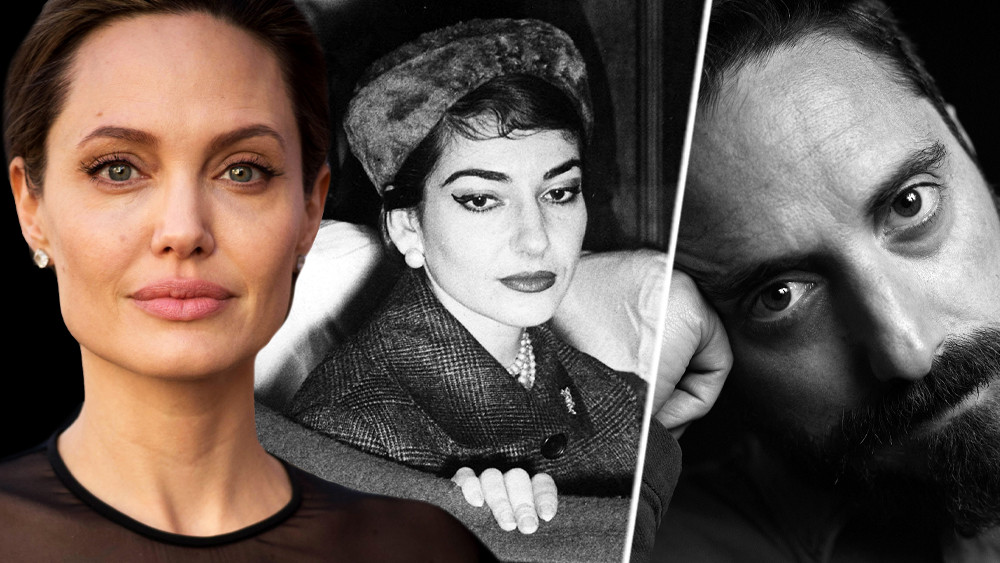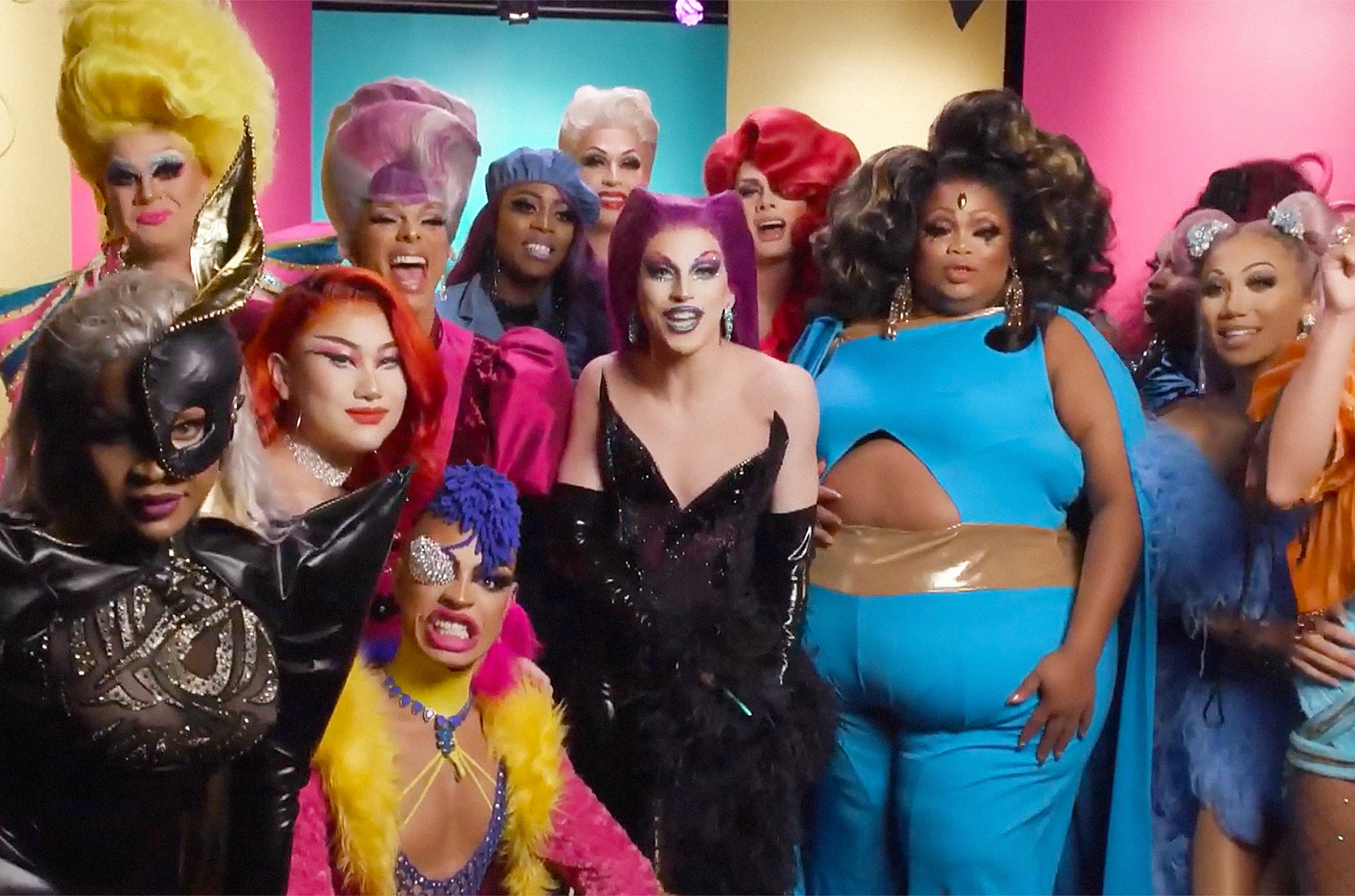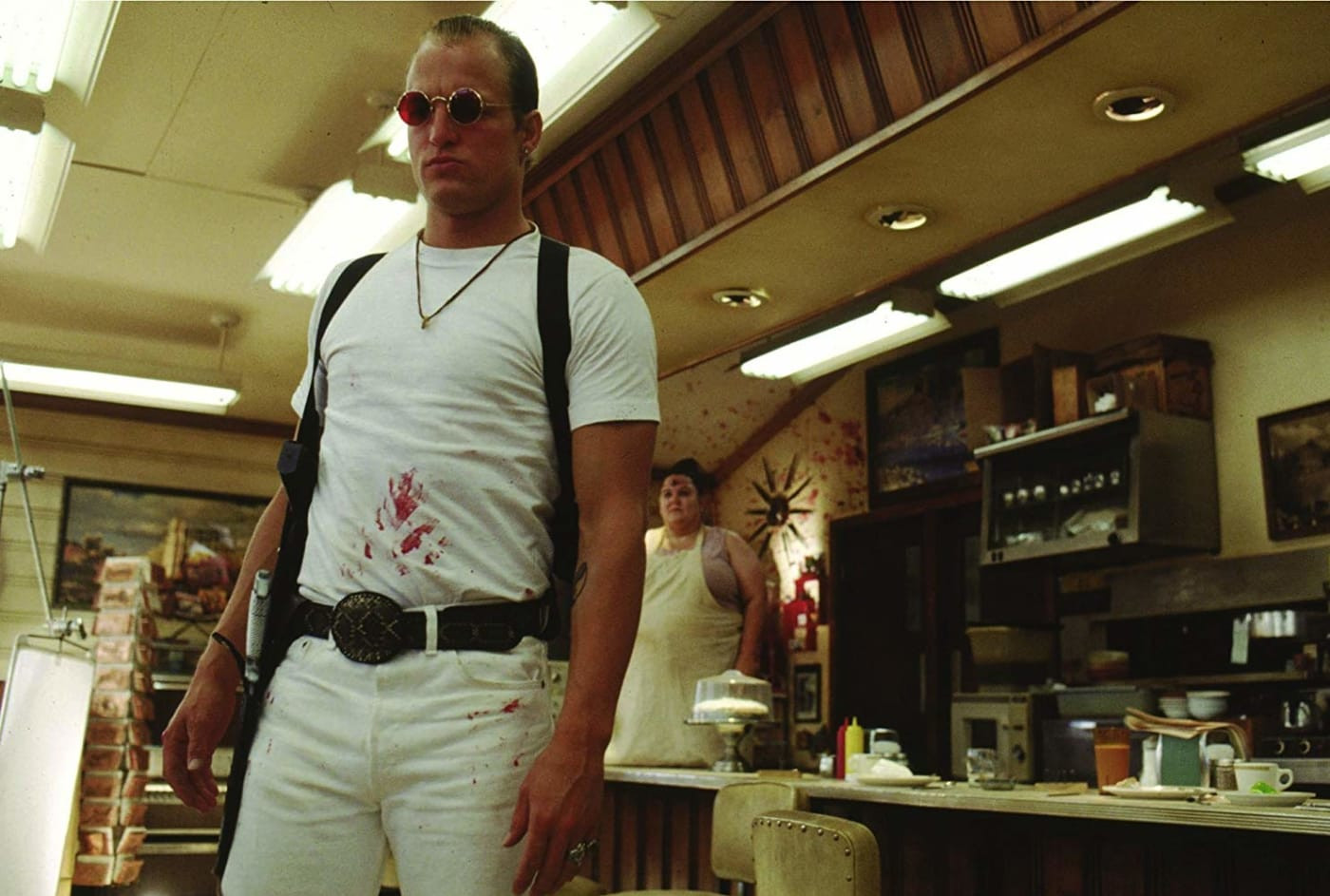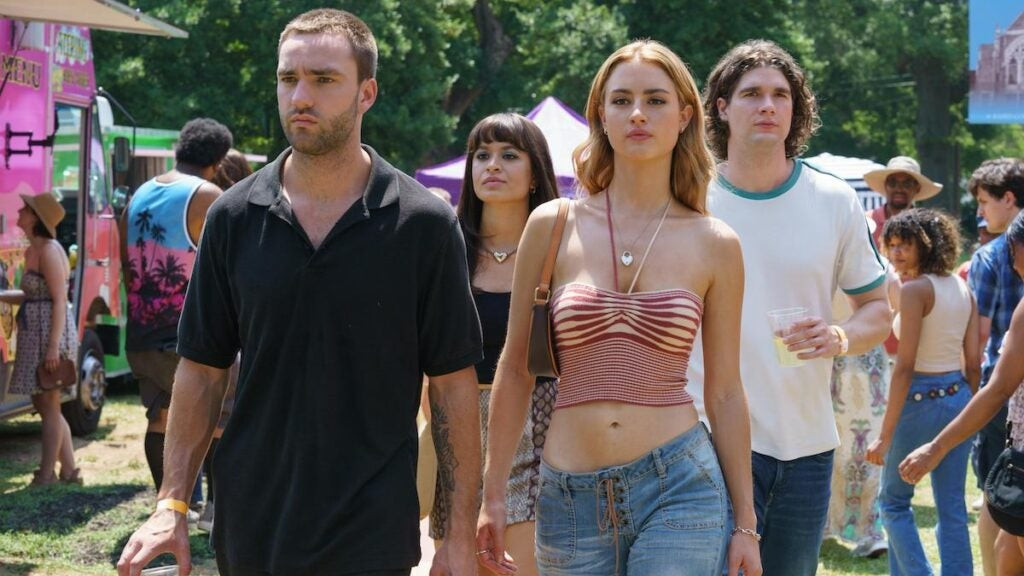The reviews for the Maria Callas biopic “Maria” are in and there’s quite the mix to behold.
The movie, which stars Angelina Jolie, is seeing raves for the lead actress with Deadline stating, “Jolie is an almost magical match for the real diva: achingly thin but still beautiful, loftily patrician, capriciously kind or selfish, tip-toeing dangerously close to madness. The actor’s commitment to this creation is obvious at every turn.” The trade magazine went as far as to say that her performances was immediately vaulted into the Oscar conversation.
The Telegraph gave the film four stars and said “Angelina Jolie dazzles as the opera diva in her finest performance in a decade.”
Next Best Picture also raved about Jolie noting she gives a “soulful and heartbreaking portrayal” and “She, too, is a diva when it comes to the big screen, and it’s so exciting to see her in a project that allows her to fully showcase her dramatic range.”
The Guardian also gave the film four stars and raved, “Jolie is a painting to be stared at in Pablo Larraín’s opulent drama, tottering around Paris in the 70s and drawing us in to tragedy as thoroughly as Bellini or Puccini”
However, the film is also getting a mixed reception with IndieWire‘s David Ehrlich noting, “this claustrophobic psychodrama is so focused on freeing its subject from her own legend that it struggles to convey who she is or was beyond it.” Ehrlich adds, “If not for Jolie, it’s possible that ‘Maria’ would feel like another form of the unfounded scrutiny that made Callas’ life so miserable; more sensitive, perhaps, but still cobbled together from echoes that are made to sound like a single voice. ”
Variety was also negative, stating, “by the end of ‘Maria’ you almost feel like it’s taken the life out of the movie.”
BBC was also mixed on the film adding, “Pablo Larraín’s fact-based drama, starring Angelina Jolie as opera diva Maria Callas, is witty and beautiful,” but “this Callas is an icon rather than a human being,” and some scenes are “less opera than soap opera.”
A Closer Look at the Critical Response
While many critics acknowledge Jolie’s stellar performance, a recurring theme emerges: a disconnect between the cinematic portrayal and the real Maria Callas. Critics felt that the film struggled to capture the essence of Callas’ humanity beyond her legendary status.
"Maria" – A Story of a Doomed Legend
As reviewed by Owen Gleiberman in Variety, “Maria,” Pablo Larraín’s drama about the legendary American-born Greek soprano Maria Callas, begins on the day of her death, September 16, 1977. As thin as a wraith, clad in a white nightgown, she has collapsed on the living-room floor of her very grand Paris apartment. The film then flashes back to one week before; most of it takes place during that week (though it’s dotted with key episodes from Callas’s life). So we know exactly where this is going. But we don’t just know where it’s going because the movie is set during that fateful final week. We know it because the story “Maria” tells is that of a neurotic death spiral.
The apartment, with its chandeliers hanging from high ceilings, its wooden walls and large old canvases, as well as the most luxurious bed I think I’ve ever seen in a movie, is splendid enough to suggest the court of an 18th-century French royal. This is Larraín’s third inside portrait of an iconic female figure of the 20th century, after “Jackie” (about Jacqueline Kennedy) and “Spencer” (about Princess Diana). In all three, the residences loom with significance, like elaborate stage sets that act as gilded cages. Jackie Kennedy, of course, occupied the White House. “Spencer” took place at Queen Elizabeth’s country estate. But though the Maria Callas we see lives a life of luxury, her apartment, far more than the houses in the other films, feels like a prison of her own making.
Maybe that’s because her whole life has become a prison. Maria gets through the days by taking her “medicine,” a cocktail of uppers and downers, notably Mandrax, a hypnotic sedative that she obtains illegally. She doesn’t eat much; we learn that she’ll skip food for three or four days at a time, an eating disorder related to her obsession with staying skinny, in contrast to the “fat” girl she was when she grew up. Everything about Maria is obsessive. She treats the two people who’ve taken care of her for years — her housekeeper, Bruna (Alba Rohrwacher), and her butler and chauffeur, Feruccio (Pierfrancesco Favino) — like vassals whose purpose in life it to cater to her whims. (Feruccio is a mensch with a bad back, but she keeps ordering him to move the grand piano around, for no good reason.) She avoids meeting her doctor as if he were the devil. And she fantasizes, night after night, that she’s being visited by the ghost of her former lover, Aristotle Onassis.
And then there’s the matter of her voice. Maria is 53, and she hasn’t sung in public for four-and-a-half years. Yet the way the film presents her, she’s a total artist, a woman fueled and consumed by her gift, which is to sing opera with a voice so sublime, so pure in its piercing majesty, that it reaches to the heavens. “Maria” is filled with opera, notably by the 19th-century Italian composers (Verdi, Rossini, Puccini) who Callas elevated in the repertoire. Every time an aria comes on the soundtrack, we’re swept up by the power of her gift. Jolie does an extraordinary job of lip-syncing to the nuances of Callas’s vocal splendor. And we can feel how the singing haunts Maria, who can’t listen to her old records; they have a perfection that gives her pain. “Audiences expect miracles,” she says with rueful awareness. “I can no longer perform miracles.” Her voice, while far from gone, is much weaker now. As the vocal coach and accompanist (Stephen Ashfield) she visits over the course of the week tells her, after listening to her perform an aria, “That was Maria singing. I want to hear La Callas!”
The myth of La Callas — the voice that enraptured the world — is what’s now imprisoning Maria. If she can’t bring La Callas back, then what point is there in living? You might call that a story as tragic as an opera: a great artist trapped by the fading of her gift. Yet you could also say that it makes the Maria Callas of “Maria” not so much a grand heroine striving for something real as a doomed legend living on fumes, like Norma Desmond in “Sunset Boulevard.”
A Closer Look at the Critical Response - The Missing Humanity
The central figures in “Jackie” and “Spencer,” although they were dealing with hellish circumstances, were quite different from that. “Jackie” was set during the week after JFK’s assassination, and it was about how Jackie Kennedy rallied herself, knowing how important what would happen during that week would be to history; in doing so, she became a profile in courage. “Spencer” was about how Diana faced up to the existential crisis of her arranged marriage and decided to save herself by changing the nature of the modern monarchy. Both movies were about a dark kind of triumph.
“Maria” bears many of the hallmarks of Larraín’s lavish empathy and filmmaking skill. Yet the movie, in contrast, is driven by a dramatic fatalism that does it little favor. It’s the first of these three films that’s about a great artist, yet Maria, somehow, seems a lesser figure than the heroines of “Jackie” or “Spencer.” Or, at least, it feels like there’s less at stake.
Jolie’s performance is, in many ways, quite fine. From the moment she appears on screen, she seizes our attention, playing Maria as woman of wiles who is imperious, mysterious, fusing the life force of a genius diva with the downbeat emotional fire of a femme fatale. Jolie, for the first time in years, reminds you that she can be a deadly serious actor of commanding subtlety and power. Yet I wish that Larraín and his screenwriter, Steven Knight (“Spencer,” “Locke”), had found a greater vulnerability in the end-of-her-tether Maria.
“Maria,” as shot by the great Edward Lachman, has an autumnal visual warmth that’s beautiful and seductive. The flashbacks are in black-and-white, and they color in Maria’s past, though in a way that leaves us with as many questions as answers. That’s also true of her interviews with an eager young filmmaker (Kodi Smit-McPhee) named — weirdly — Mandrax. Her bad relationship with her mother is captured in scenes, set during WWII, in which the young Maria is asked to sing for (and sleep with) German soldiers.
A Stylistic Performance of a Performance
But the key flashbacks are those built around Onassis, the fabled Greek shipping tycoon she fell in love with in 1959. Haluk Bilginer plays him as a charismatic troll who calls himself “ugly” but revels so manipulatively in the power of his wealth that he makes himself somehow…irresistible. Maria gets caught up in his mystique, yet won’t give herself over to his control; that’s why the two never marry. (In fact, Onassis left Callas to marry Jackie Kennedy, something the film deals with tangentially, by introducing JFK as a character.)
There’s a feeling of fate hanging over “Maria.” It’s Larraín’s way of raising the stakes, yet in a strange way it ends up lowering them as well. Such is the nature of Maria Callas’s determination to control her destiny that even the hopes of the audience — that she’ll somehow find a way to transcend her funk — aren’t allowed to interfere with her self-fulfilling downward spiral. We get a lot of glimpses (shot on different film stocks) of Callas on stage, back in her 1950s and ’60s heyday. But none of them are extended enough to let us sink into the sensation of her artistry bringing down the house. At one point, Maria observes that singing opera the way she does is so draining it takes the life out of you. In its way, that’s an awesome thought, but by the end of “Maria” you almost feel like it’s taken the life out of the movie.
A Masterful Vision - "Maria"
As stated by Stephanie Bunbury in Deadline, No director working today has a greater command of the medium than the Chilean maestro Pablo Larraín, whose previous achievements in the generally unloved biopic genre — Jackie and Spencer — are now joined by his sweeping reimagining of the last days of Maria Callas. Every element in Maria speaks of that mastery: the first deep-focus shots of Callas’ lush Parisian apartment, where the light through the window is transfigured into a kind of mist; the bold and brilliant use of diegetic music, so essential to conjuring Callas’ world; and the elegant merger of past and present, dream and reality.
Maria Callas died in 1977, aged 53, and, as anyone even faintly interested in opera knows, she had a life of tumult, torment and tragedy that was itself operatic in scope. The events in Steven Knight’s finely constructed script take place over one week, but Callas (Angelina Jolie) spends much of that time relating or remembering fragments of the past, inviting the viewer to piece them together to form a life. We see her mother forcing her to sing for occupying Fascists during the Second World War. We catch glimpses of her longstanding affair with Aristotle Onassis (Haluk Bilginer), whom she willingly allowed to control and confine her. We see her make a bonfire out of her costumes after her voice has roughened.
Other filmmakers might dodge the music itself, overwhelming as it is, but Larraín opens the floodgates to its oceanic surge. There are entire dazzling arias; some are re-created on the great stages of Europe and some are seemingly figments of Maria’s expansive imagination. One of the most extraordinary scenes is her encounter under the Eiffel Tower with a horde of Parisian workers who are suddenly, inexplicably belting out Verdi’s “Anvil Chorus” from Il Trovatore, the square becoming a vast theatre set. And then, just as suddenly, they disappear and she is alone in the street save for her amanuensis, Mandrax. Along with us, he listens to her stories.
But Mandrax (Kodi Smit-McPhee, appropriately strange) isn’t real either. Always obliging, he is actually a personification of the prescription drugs to which Callas is spectacularly addicted. Her loyal housekeeper Bruna (Alba Rohrwacher) and butler Ferruccio (Pierfrancesco Favino) have various tasks: cooking special meals to tempt her away from starvation, moving her piano from one room to another and going through her pockets, trying to find her secret stashes of pills. Of course, she is too clever for them, brushing aside their gentle queries as to whether the TV crew she says she is expecting actually exists. “What is real and what is not real is my business,” she says grandly. Callas is perfectly aware she conjures people who aren’t there. Of course she does. The best part of her life — the only part that matters — has been about exactly that.
Jolie is an almost magical match for the real diva: achingly thin but still beautiful, loftily patrician, capriciously kind or selfish, tip-toeing dangerously close to madness. The actor’s commitment to this creation is obvious at every turn. Knowing that Callas was only happy when on stage, she learned to sing for the role; the voice we hear is a blend of Callas and Jolie’s own. Even more importantly, we can see her chest rise and veins swell as she is consumed, body and soul, by the physical and emotional effort of singing. “You have no idea the pain of pulling music through your belly out of your poor mouth,” Maria snaps at a fan who dares to recall one of her many concert cancellations. “No idea!” You can’t show that without living it.
And yet, somehow, the portrait the film draws is curiously bloodless. Callas the woman remains distant and unknowable; cunning to the end, she eludes us. Larraín is clearly interested in the mannered presentation of certain very famous women; Natalie Portman’s Jackie Kennedy and Kristen Stewart’s Diana Spencer were also works of artifice. Callas is similarly studied, but to the point of seeming stilted. Our enduring image of her is a composition of limbs and couture posed at a café table, waiting for the adulation of passers-by. We are watching a performance of a performance.
The curtain duly falls, reprising a prologue in which we see that Callas has just died. The heightened emotion that transfixed us in the excerpts from Medea or Madama Butterfly is strikingly absent here. Larraín keeps the camera at a distance; the body is hidden behind a chair. Nothing to see here, you might say, even though there has been — as always in a Pablo Larraín film — so much to see. Something is missing. Perhaps it is that there is nothing of the grit and grind of politics, which often works as the sand in his narrative oyster, not only in the Chilean films like Neruda or No, but Jackie and Spencer too. Maria tells a fascinating story, but it lacks that rasping edge.

















